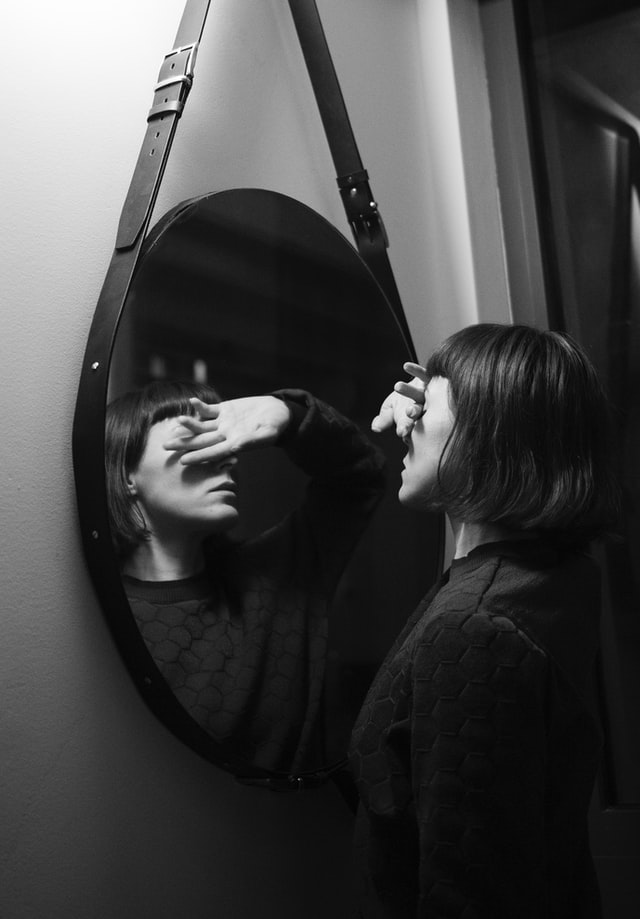By Margot Schaal, GCFPCM and Assistant Trainer
Ultimately, how we treat ourselves says everything about what our self-image is.
Am I as kind to myself as I am to my neighbor, or a stranger on the street, to my clients or even my grand/child?
A client who showed up curved forward in her upper torso, wanting to “stand up straight” for her daughter’s wedding, had a sad, almost sour, facial expression. She ran a business and carried the work of family gatherings. Would she be a primary organizer of the upcoming wedding – oh, yes. After a few sessions, the Feldenkrais® office clerk noted – “she is smiling now.” Yes. As this client developed greater sensitivity to herself and became more upright, her habitually drawn down face shifted into softness, fullness with a more ready expression. Without mentioning this, she had begun to alter her self-image.
Why do you think that there is a lot in the Feldenkrais Method® of somatic education that we don’t mention in classes and individual sessions? I believe it is because Self-discovery is the most powerful path of understanding, and this supports a healthy Self-image. You know how special the “light-bulb” feeling is – you get this, you get you, in a new way, and it is your discovery. You have a direct experience of your innate intelligence. A student was shocked after his first ATM® lesson. “I’m sixty years old and I learned something new about myself!” Even after decades of learning through this method, we practitioners continue to experience light bulb events. It is delightful in the moment; it deepens our experience and our self-understanding. This work/play is another opportunity to refine and evolve our own self-image.
The difference in your perception of yourself before a lesson and after the initial scan is already a shift in this image of yourself. You observe yourself differently, thus you are different. The self-image is not static, it is changing continually. You may even feel it change throughout the day. You present (and feel) a given way when working, another way in the grocery store, or with a family member, or at the ocean or mountains. What happens when you are with a friend? Right – which friend? Notice how you are different depending on the individual or group present. Self-image involves our response to our environment, including the people we associate with. Have you experienced another’s expectation of you when you’re about to meet someone you haven’t seen for a while, that you are the you you used to be – but you are not that person now?
As Feldenkrais Practitioners we see each client and student beyond their pain or current challenge. Our “other’s image” of them is that of being whole, and healthy. Working together they get to know their own wholeness. I share a sample of this through Functional Integration® lessons with one client.
Thomas was full grown, of sturdy frame, a bit chunky, and spoke in a high-pitched voice. He worked steadily at his craft and was probably very good at it. There was a jolly ease about him in spite of the childlike demeanor; his way of being off-handed had a flirtatious air. He also expressed through rounded shoulders, head forward of spine. And no lordotic curve. While walking Thomas made parasitic movements of his mouth.
Thomas, who worked sitting at a computer for long hours, had back pain. As we worked in walking and lying it was evident that his left pelvic girdle did not allow the fluid movement of the right side. And his sensation of himself was in opposition to his organization. For example, he stood with more weight through his right leg and on his right foot, yet he felt there was more weight on his left foot. His sensory image contradicted his presentation, even though it corroborated with the excessive muscular contractions. Working with his patterns of muscular contraction, and the relationship of the bones of his legs, he sensed improved balance while walking.
Between sessions he was able to sense himself more and make gradual improvement. When Thomas arrived in a t-shirt declaring “BOY” in large letters, this affect and self-image stared me in the face.
As we brought more movement into his pelvis in sitting, reaching and bending, the distribution of effort shifted from his ribs, became more even through his torso and engaged his pelvis for movement that connected his upper and lower body…and sitting became more comfortable.
Unsurprisingly, additional discomforts were revealed with time, such as an extreme popping in his jaw. We addressed this in various ways, including relating his eyes and feet. Having rapidly developed his sensory capacities, Thomas experienced a period of not knowing how he felt different.
On his own he became aware of his way of carrying his head forward. He could do and he could not do it; he appreciated the difference, and the relief of his head resting over the spine. We worked with a variety of pecking actions which include the spine, with reducing shoulder tension, and he often left walking with more command in his step.
While we did not discuss “self-image,” his was changing. He had some days without pain and so decided to reduce the frequency of acupuncture sessions, which had been bi-weekly.
Thomas’ ability to sense himself grew, as the pain reduced. While he sat more upright, head above pelvis and a curve in his lower back, he felt changes through his shoulders and chest.
Nonetheless, he continued to walk with small steps. The boots on his feet belied the character of the action. So we incorporated the boots into lessons – he sensed his body and seemed to like himself more and more.
After working with his diaphragm and sacrum, when sitting supported through his skeleton, Tomas perceived this as “sitting more properly.” How vital our understanding of a client is through their choice of words. Proper is an indication of correctness. (How does that relate to claiming one’s 30-something self to be a boy?). Paradoxically, language is also flexible – when I worked for a residence of retirees where the average age was 84, I was half that age and fully accepted the residents addressing me as a “girl.”
Tomas developed optimism. “It’s getting better. The symptoms begin but don’t get to a high level. When they begin, I can go to sleep and wake up without them.” He did practices I provided often, and it “felt good.” Once he experienced the skeletal connections through his own body, we discussed the relationship of his lower back and pelvis to his upper back and neck. Remember Moshe’s dictum – experience before theory.
We also talked about Thomas’ life goals and the changes in them he has made through this learning/experience of himself. While I saw the changes in self-image, he felt the changes in himself and made new decisions about what mattered to him and how he would direct his life. Thomas was maturing, he expanded himself and his vision. He no longer had extreme “bad” pain when leaving work after too many hours, though sometimes he had a low level of pain.
He knew he was sitting more upright. All movement was easier. Walking with all of himself connected he declared “It’s like all of me is a little pushed up.” His pelvic movements were nearly even on the right and left sides.
Two months into our work, I noted that he looked good. What could that mean? Happy, healthy, in possession of himself. Again, I examined and experimented with the relationship between his pelvis and jaw. He learned about diagonal use of himself, many ways his shoulders could move, and the release of his thoracic and cervical spine. Over the past few months, Thomas gradually minimized his parasitic mouth action while walking.
When he declared he didn’t have back pain it was like a graduation.
Then Thomas returned after vacation at home with family where – guess what happened? Yes. He had severe pain. He spent time in the pool to aid his movement.
And he decided to exercise again.
During what may be our last session, while Thomas was walking I had him add a sucking movement of his lips. In the conclusion that is not conclusive, he stated “I feel great!”
Knowing there are a multitude of ways to help Thomas continue improvements, I encouraged him to proceed through ATM®, keeping the door open for Functional Integration. He returned a couple more times. Then declared “I’m going to see if I can be more independent.”
 About Margot:
About Margot:
Margot currently sees clients and teaches classes online. Her upcoming Playshop series combines Feldenkrais and Qigong to explore the hips and pelvic area. Her website is: www.margotschaal.com

